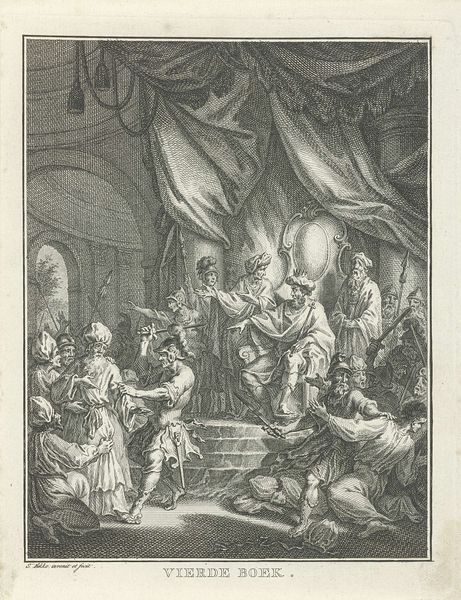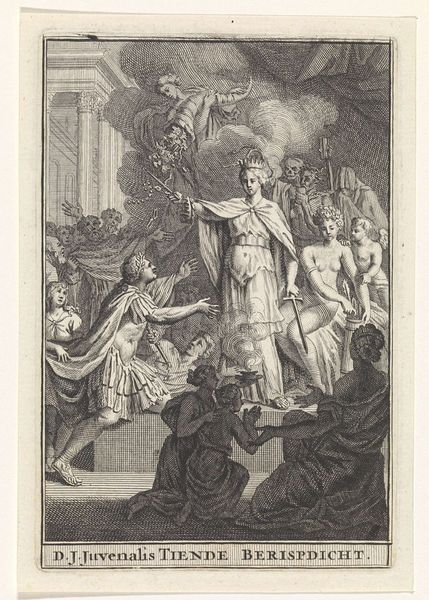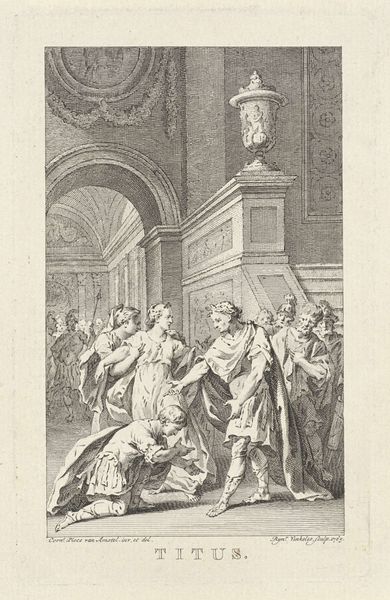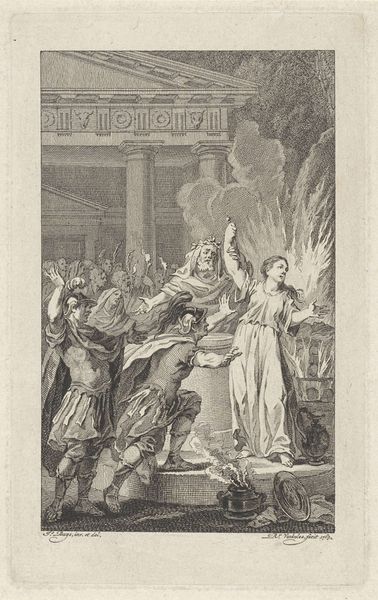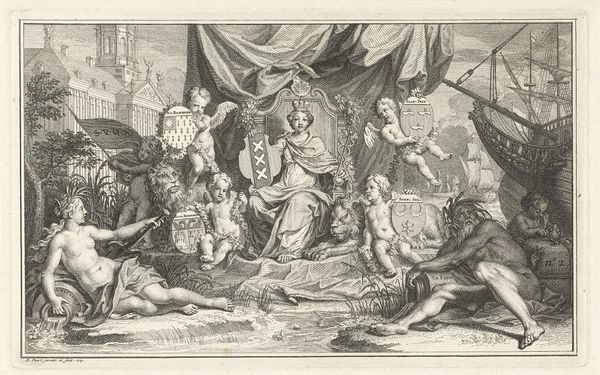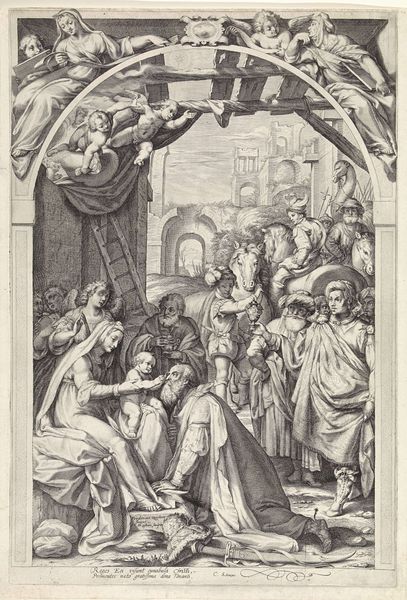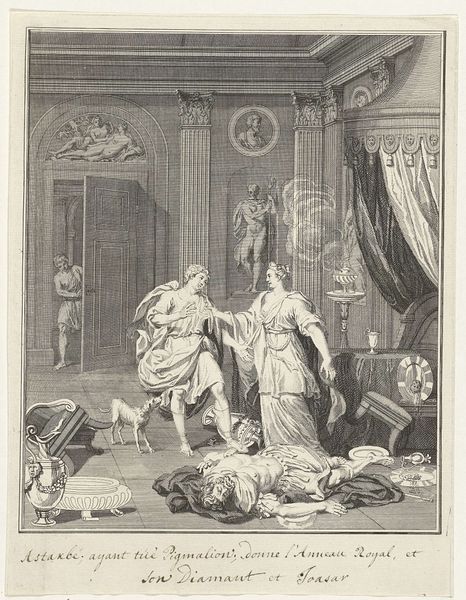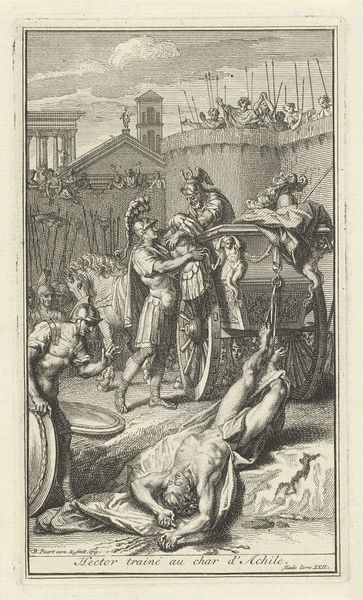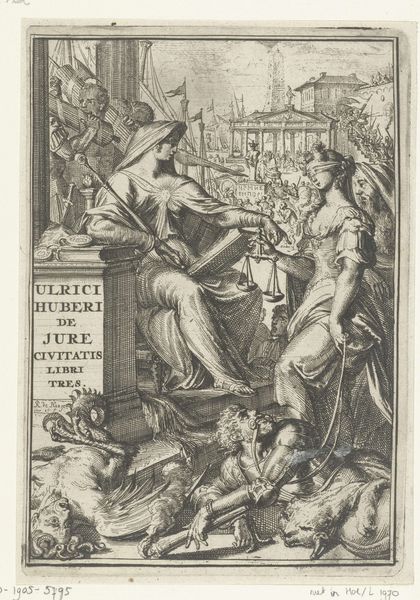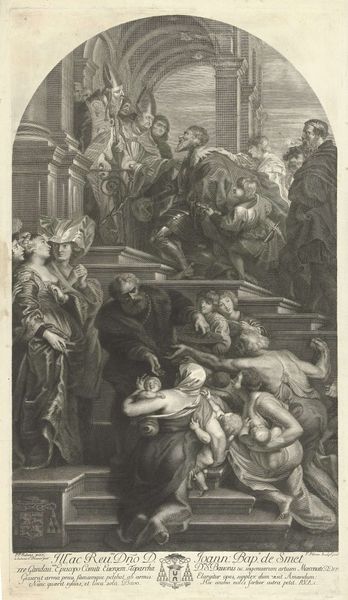
print, engraving
#
baroque
# print
#
old engraving style
#
figuration
#
line
#
history-painting
#
engraving
Dimensions: height 359 mm, width 224 mm
Copyright: Rijks Museum: Open Domain
Curator: What strikes me first is the stark contrast of this print. The light falls dramatically on the figures, highlighting their gestures and expressions. It's very theatrical. Editor: This is an engraving by Cornelis Huyberts, dating from about 1720 to 1728, depicting a scene of "Moses and Aaron Before Pharaoh". As a history painting rendered as a print, we see the scene staged to emphasize its historical and emotional gravity. What draws me in, as an iconographer, is not simply the scene's representation but its active engagement with its source, with history and myth merging as truth through its layered imagery. Curator: Yes, the use of line is quite masterful, particularly in rendering the textures—the flowing robes, the scales of the dragons, the Pharaoh's throne. Editor: Those dragons themselves aren't merely ornamental flourishes. They embody a cultural tension. Their appearance underscores the pagan context versus the divinely supported faith of Moses and Aaron. Consider how turning the staffs into snakes, or dragons, signifies more than just a display of power. It’s a direct confrontation of symbols, a war of ideals expressed through this historical narrative. Curator: The composition is quite clever, leading the eye from the regal Pharaoh, down the steps, and toward the chaotic scrum of figures confronting the dragons. There's a dynamic interplay between order and chaos. Editor: Absolutely, the ordering itself signifies purpose. Think of the gazes! Huyberts guides us through a complex interplay of defiance, fear, authority, and divine intent. These all channel deeper anxieties about cultural clashes and power structures, resonating through a theological perspective of early-modern Europe, even though it illustrates a biblical episode. Curator: Looking closer, I admire the skill of the engraver to evoke space, light, and volume using only lines. It reminds me how the simplest marks, arranged carefully, can give such an impactful representation. Editor: It shows us that this printed format was far more than just a means of replicating; the print format made the religious story a part of cultural consciousness that extended beyond the direct narrative of faith. Each figure is there to elicit reflection and internalization. Thank you, looking together at those historical imprints truly makes you reconsider its legacy and relevance for the present! Curator: Indeed! It shows that formal and iconographic readings complement each other to create a comprehensive and enlightening perspective.
Comments
No comments
Be the first to comment and join the conversation on the ultimate creative platform.
